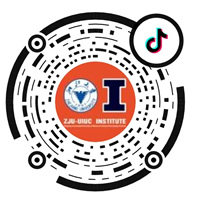Recently, the top journal in information theory, IEEE Transactions on Information Theory (TIT, CCF-A) has reported the latest research results of the research group of Zhang Meng, Assistant Professor at Zhejiang University-the University of Illinois Urbana-Champaign (ZJUI), and his research group with the title of "Age-Dependent Differential Privacy". The research group have designed an age-dependent differential privacy technology framework, which is used to protect users' real-time data privacy and achieve the optimal balance between data utility and data privacy.
Emerging real-time intelligent IoT applications require real-time massive data updates, such as autonomous vehicles requiring real-time collection and updating of surrounding vehicle and environmental information, as well as real-time high-precision map information, virtual reality and metaverse applications require real-time panoramic images or video content information. In these applications, the value of real-time information decreases over time. The transmission delay and congestion in the network can affect the real-time performance of the data receiving end, seriously affect the user experience, and may endanger the system and personal safety of users. Therefore, Age of Information has become an important emerging metric used to describe the timeliness of information about the state of the data source held by the receiving end, that is, the freshness of information.
And will the freshness of information also affect data privacy? Potential privacy attackers may infer personal sensitive information about users based on published real-time information or machine learning and data analysis results based on real-time data, thus seriously infringing on user privacy. In addition, compared to static data, the characteristics of frequent, real-time, massive, and timely correlation will make real-time data-driven real-time intelligent network applications suffer more serious data leakage.
Domestic and foreign researchers have conducted extensive research on the design of noise adding algorithms and dynamic database privacy analysis in differential privacy. However, these studies did not account for the impacts of the temporal correlation of data or data timeliness on data privacy, which not only fails to solve the problem of privacy leakage caused by the temporal correlation of real-time data, but also often requires the addition of excessive noise, which seriously affects the utility or accuracy of the data.
In response to these issues, Assist Prof. Zhang Meng and his research group designed an age-dependent differential privacy technology framework based on information freshness for real-time network applications and privacy protection needs.
▲ Age-dependent differential privacy framework
The research group modeled and defined age-dependent differential privacy, and then analyzed and reached the following conclusion: any algorithm that satisfies traditional differential privacy also satisfies age-dependent differential privacy. The privacy risk satisfies the equation:
where ϵ_c is the privacy risk of the classical differential privacy mechanism, and △(t) is the maximum total variation distance of the transition probability measure. This result first establishes a connection between classical differential privacy theory and age-dependent differential privacy theory: for any steady-state time-series data, the maximum total variation distance is the only statistical feature we need to refine when characterizing it. Furthermore, this result demonstrates the feasibility of a new type of real-time privacy protection technology, using "appropriately old data" and characterizing its privacy protection effects. Finally, combining traditional noise adding techniques with data aging techniques, the research group designed a differential privacy framework based on information freshness.
▲ Performance comparison
Simulation results (as shown in Figure 2) indicate that, in specific scenarios, compared to traditional pure noise techniques, combining noise adding techniques with data aging techniques can achieve unbounded data utility gains while maintaining the same level of privacy protection.
Assist. Prof. Zhang Meng of ZJUI is the first author of the paper, and the research was done in collaboration with Prof. Ermin Wei of Northwestern University, prof. Randall A. Berry of Northwestern University, and Prof. Huang Jianwei of The Chinese University of Hong Kong, Shenzhen.
Article Link: https://arxiv.org/abs/2209.01466
About the author
First Author- Dr. Zhang Meng
Being selected in the National Youth Talent Plan, Dr. Zhang Meng is an Assistant Professor at Zhejiang University -University of Illinois Urbana-Champaign Institute. His main research interests include wireless and computer networks, intelligent network optimization, edge intelligence, and distributed machine learning. Specific areas also include real-time communication and computing, real-time data privacy protection, and network and data economics. Dr. Zhang Meng received his Ph.D. in 2019 from the Department of Information Engineering at the Chinese University of Hong Kong and his bachelor's degree in 2015 from South China University of Technology. After obtaining his Ph.D., he conducted postdoctoral research at the Department of Electrical and Computer Engineering at Northwestern University in the United States. During his Ph.D., he visited Princeton University. Dr. Zhang Meng received the IEEE/IFIP WiOpt Best Paper Award in 2021. He serves as a reviewer in top journals and international conferences in the field of wireless networks, including IEEE/ACM ToN, IEEE TMC, IEEE JSAC, IEEE TWC, IEEE INFOCOM, and WiOpt.
Second Author: Prof. Ermin Wei
Prof. Ermin Wei is an Assistant Professor in the Department of Electrical Engineering and Computer Science and the Department of Industrial Engineering and Management Sciences at Northwestern University. Her research interests focus on the control and operation of network systems, with an emphasis on market analysis in smart grids and energy networks. Her research also includes large-scale distributed optimization algorithms and theories, with a focus on nonlinear convex optimization, network optimization, asynchronous algorithms, and their applications.
Third Author: Prof. Randall A. Berry
Prof. Randall A. Berry is the Head and Professor of the Department of Electrical and Computer Engineering at Northwestern University in the United States. Prof. Berry's research covers resource allocation in network systems, from communication networks to social networks. Specific topics of interest to Prof. Berry include developing distributed resource allocation techniques for wireless networks, dynamic spectrum sharing and wireless spectrum policies, understanding the role of incentive mechanisms in network security, and modeling learning and adoption in social networks.
Fourth Author: Prof. Huang Jianwei
Prof. Huang Jianwei is currently the Presidential Chair Professor at the Chinese University of Hong Kong (Shenzhen), Vice Dean of the Faculty of Engineering and he is also the Associate Director of the Shenzhen Institute of Artificial Intelligence and Robotics for Society (AIRS) and Director of the Crowd Intelligence Research Center. He has been a Special Professor of Shenzhen Pengcheng Scholar, IEEE Fellow, a Distinguished Lecturer of IEEE Communications Society, a Web of Science Highly Cited Researcher in Computer Science and the Editor-in-Chief of IEEE Transactions on Network Science and Engineering. Prof. Huang has long been dedicated to pioneering research in the nexus of network optimization, network economics, and crowd intelligence, characterized by integrating economic theories to provide solutions for resource allocation and optimization in networks.







